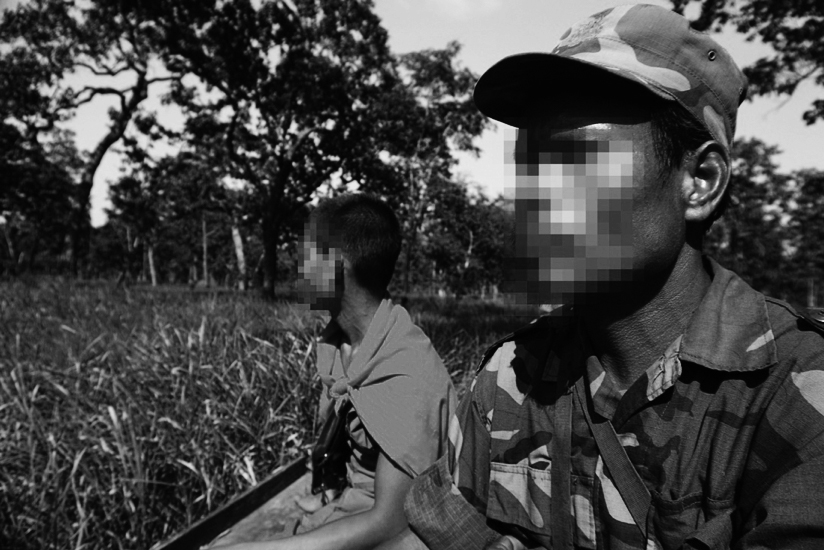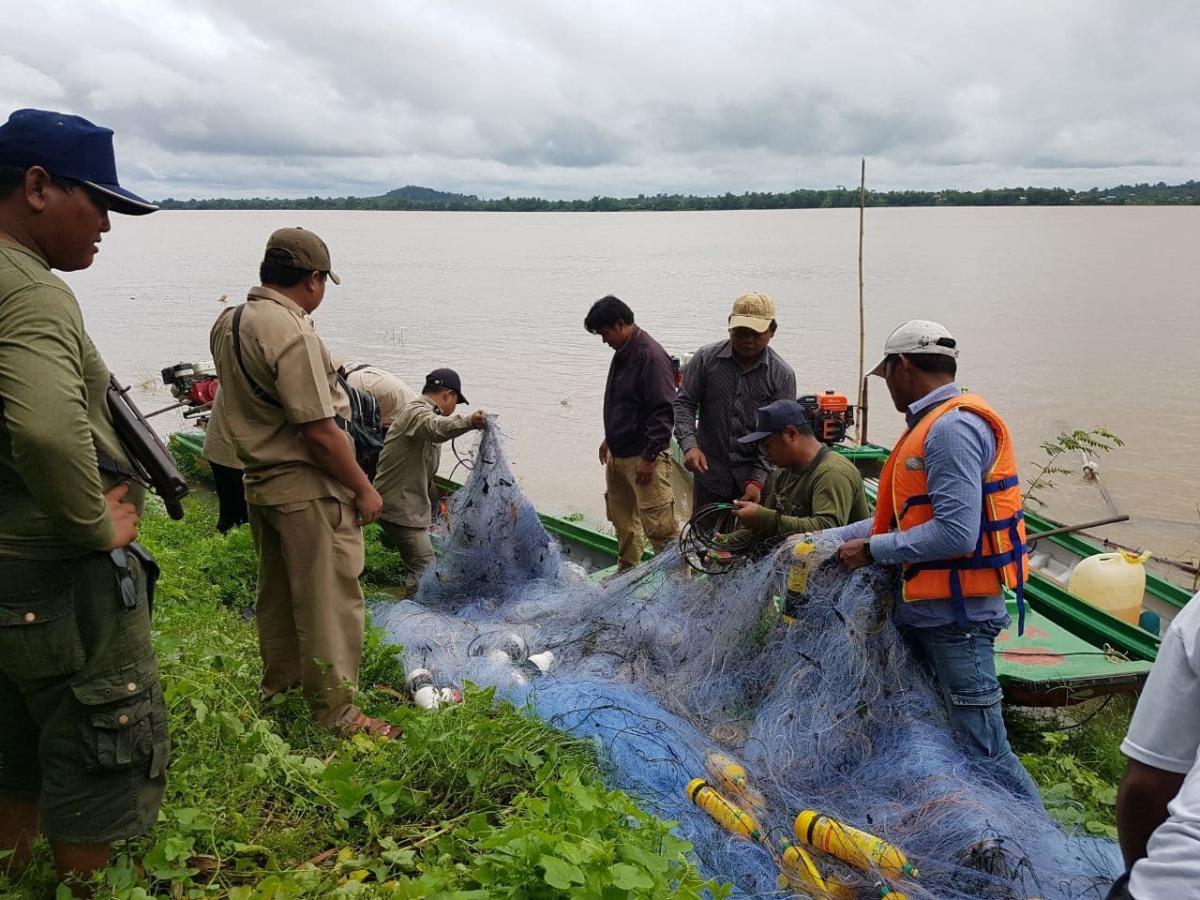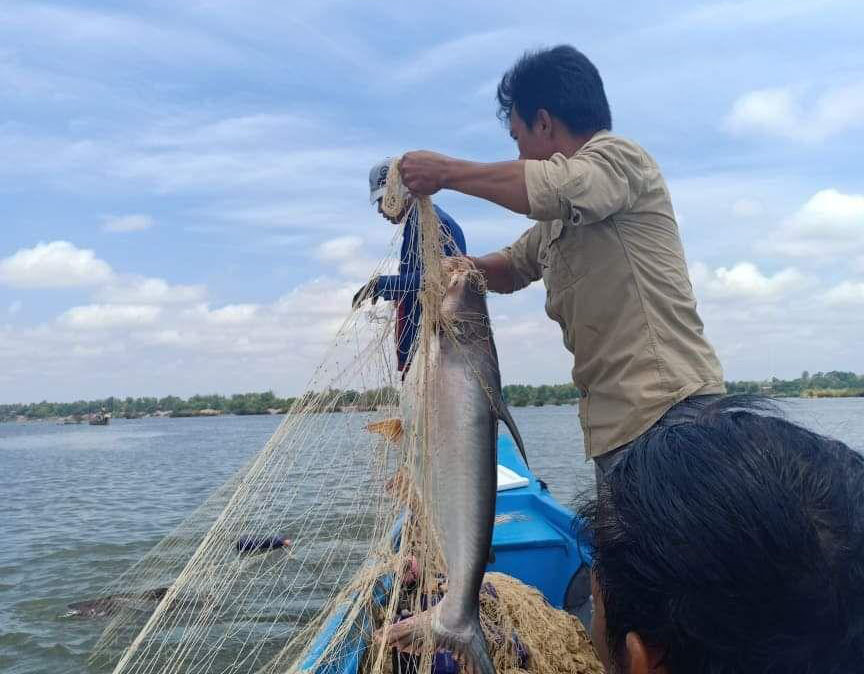Fisheries conservation and governance in the Tonle Sap
2016 was a difficult year in the Tonle Sap as the severe drought and hot weather affected water, fish, and flooded forests, resources on which the vast majority of the 2 million people who live in and around the lake depend.
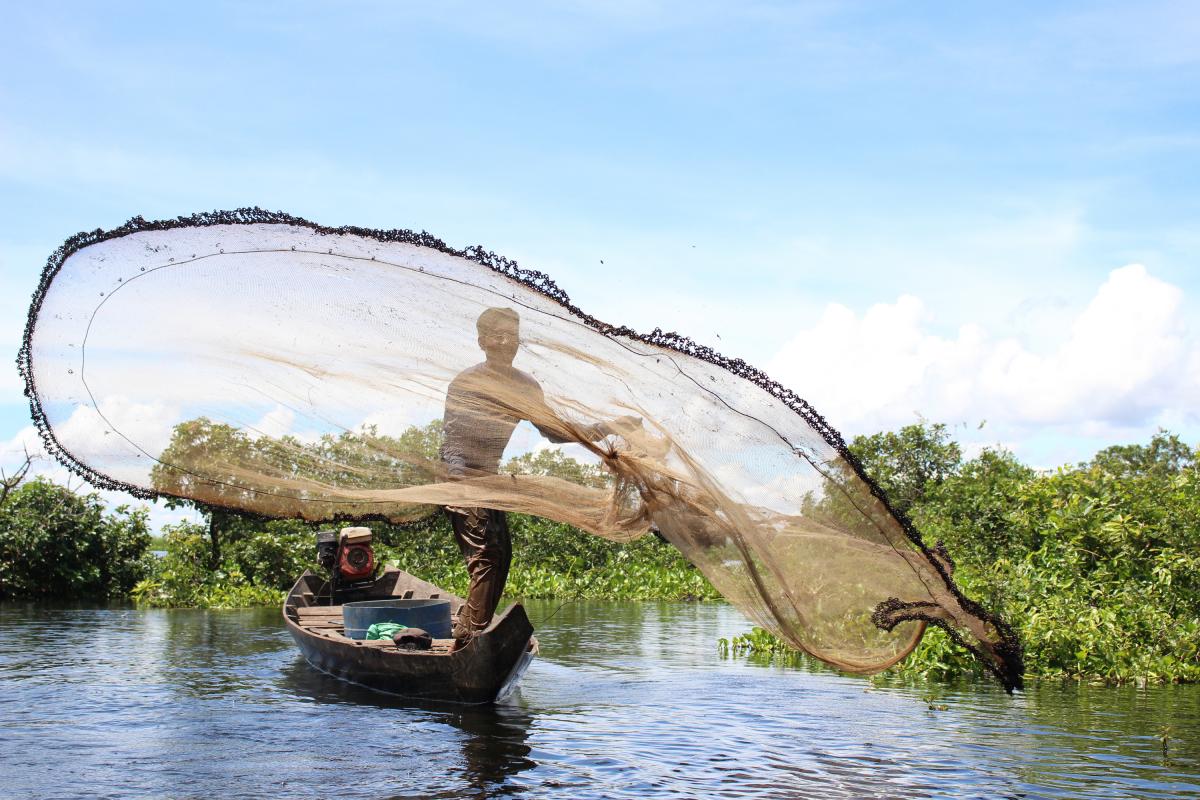
Photo: Fisherfolk fishing with castnet at Balot CPA in Boeung Chhmar © IUCN Cambodia / Pheakdey
 Photo: EU logo © EU
Photo: EU logo © EU
With EU funding, IUCN and FACT have worked since 2013 to strengthen community fisheries through the establishment of fish conservation areas (FCAs) in three pilot sites in the Tonle Sap: Kampong Phluk, Phlov Touk, and Boeung Chhmar.
FCAs, designed to help the recovery of fish stocks through the strict protection of deep pools where fish congregate during the dry season, have increasingly been used to build capacity and confidence of the community fisheries committees.
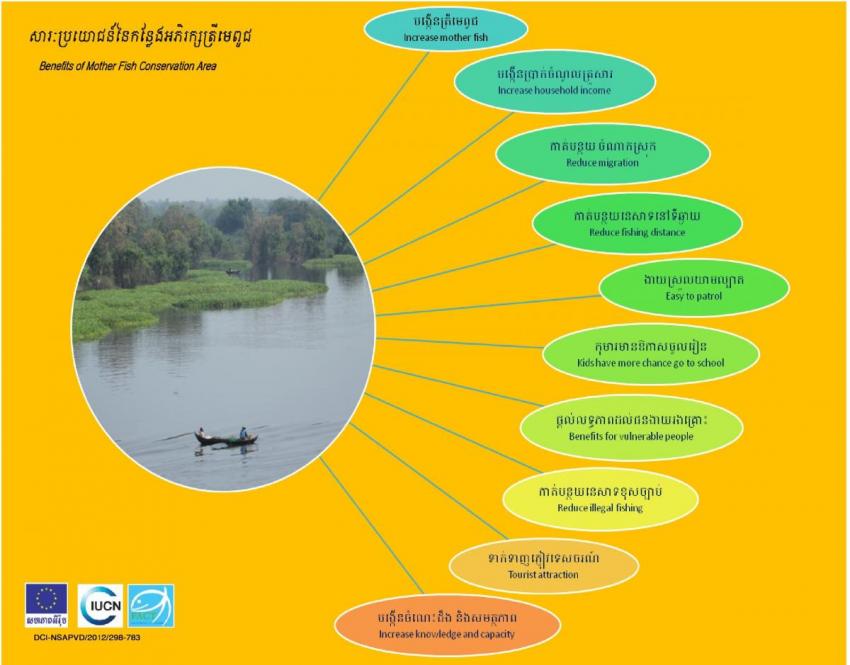 Photo: Leaflet about benefits of Mother Fish Conservation Area developed by EU-NSA project © IUCN Cambodia
Photo: Leaflet about benefits of Mother Fish Conservation Area developed by EU-NSA project © IUCN Cambodia
In 2012, the government abolished all private fishing lots in the Tonle Sap, transferring fishing rights to local communities. But no steps were taken to prepare or reinforce communities or government in order to avoid a "tragedy of the commons" whereby inequitable but well managed fishing lots were replaced by a free for all.
Responsibility for managing fisheries in the Tonle Sap falls almost entirely on the communities. The Fisheries Administration, Ministry of Environment, and commune councils are largely absent. With sufficient external (typically NGO) support, they can react to events but generally speaking they have neither the resources nor motivation to take the lead in moving fisheries to a more sustainable footing.
This is the governance "gap" in which the IUCN/FACT project has operated. While the project has had real positive results in terms of increased fish stocks, reduced debt, and greater local capacity, it is clear that transforming fisheries management in the Tonle Sap requires a more responsive and effective state. Pilot projects such as ours can only go so far in the absence of a positive enabling environment.
But there are several grounds for optimism. After several years of close support, the communities we work with are showing more initiative in engaging commune councils and police in combating illegal fishing. At the start of the project, they would ask IUCN or FACT to intervene. Now they communicate directly with local authorities.
There is reduced dependency on donor funding. In Kampong Phluk, the commune has agreed to allocate 10% of tourism revenue to the community fisheries committee. In Boeung Chhmar, families have agreed to pay the committee a fee for the right to deploy a limited number of hyacinth fish traps. We are now exploring the possibility of accessing state funds through the commune investment plan to support committee operations.
This shows how conservation interventions, such as the establishment of FCAs, create space for more fundamental changes in attitude and behavior. The process of negotiating, demarcating, and patrolling the FCAs, and monitoring changes in local livelihoods, has driven improvements in commitment and performance. In all three sites, the committees contributed labor and fuel to ensure 24/7 patrols during the peak illegal fishing season in January - April. This experience has been shared with fishing communities from across the Tonle Sap through a series of workshops.
Another reason for optimism is that many of the project results are being incorporated into the amendment of the 2007 community fisheries development sub-decree. These include legalization and regulation of snakehead fish raising and granting committees the authority to charge non-members for fishing in the "spillover" zone around the FCAs. Representatives from the communities we work with have attended and contributed to several consultations on the amendment.
So what started off as a narrowly defined conservation project has morphed into a broader initiative to improve fisheries governance initially in the three pilot communities but increasingly across the Tonle Sap through networking between fishing communities and national level policy reform.
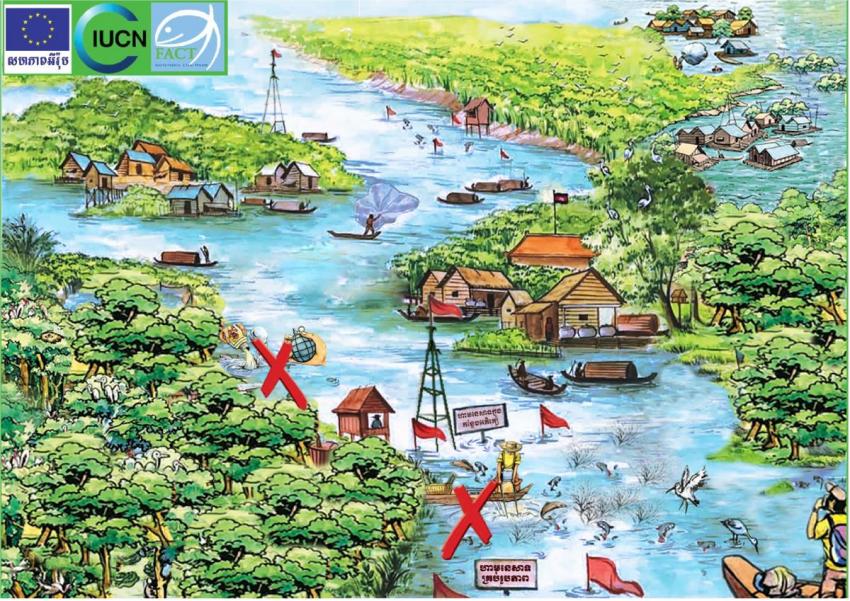 Photo: Awareness signboard on FCA management concept, developed by EU-NSA project © IUCN Cambodia
Photo: Awareness signboard on FCA management concept, developed by EU-NSA project © IUCN Cambodia
